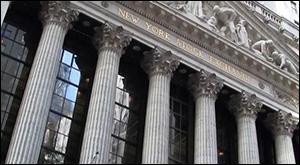 Chances are pretty high that among the daily lexicon of most Americans, you are not going to hear the words ‘maker-taker.’ And yet, outside of the debate about preventing Wall Street’s too-big-to-fail banks to create another epic taxpayer bailout in the future, the maker-taker debate is one of the hottest on Wall Street. On Tuesday of this week, the glacially-slow to respond Securities and Exchange Commission (SEC) held a full day hearing on the ‘maker-taker’ model and other stock market structure dysfunctions.
Chances are pretty high that among the daily lexicon of most Americans, you are not going to hear the words ‘maker-taker.’ And yet, outside of the debate about preventing Wall Street’s too-big-to-fail banks to create another epic taxpayer bailout in the future, the maker-taker debate is one of the hottest on Wall Street. On Tuesday of this week, the glacially-slow to respond Securities and Exchange Commission (SEC) held a full day hearing on the ‘maker-taker’ model and other stock market structure dysfunctions.
In simple terms, maker-taker is another wealth extraction tool used by Wall Street firms to pick the public’s pocket in the name of stock market liquidity. In more complex terms, brokers servicing retail clients and institutions (like those managing your pension money) are incentivized to send their customers’ stock limit orders to trading venues that will paythem a rebate (on the premise that they are ‘making’ liquidity) while traders who trade on those limit orders are charged a fee (on the premise they are ‘taking’ liquidity). Thus the maker-taker model.
Finance Professor Larry Harris, of the USC Marshall School of Business, told the SEC panel on Tuesday that ‘fees charged to access standing limit orders are essentially kickbacks that exchanges charge people who want to trade with their clients who offer limit orders. In any other context, collecting such fees would constitute a felony. Although legal in the security markets, they are impediments to fair and orderly markets. They need to go away.’
This post was published at Wall Street On Parade By Pam Martens and Russ Marte.

Recent Comments